During the pandemic, our family needed to undertake maintenance on our off-grid summer cabin, with no electricity, no running water, and no flush toilet. It is scenic but certainly not for the faint-hearted!
However, we went completely prepared in summer, whereas if your power shuts down unexpectedly due to a blackout in the middle of winter, then my 6 essentials can help you and your household to survive. Here’s how.
Light
We used the sun itself, matches, candles, torches, spare batteries, and some wind-up and solar chargers.
During the summer months, it is easy to rise when the sun does and sleep just after the sun sets, particularly if you’ve been foraging for food, collecting or chopping firewood, and taking long walks in the countryside.
Light is scarce after mid-afternoon in the fall or the winter but in summer, we used the daytime to do essential tasks. We had already fitted several solar panels (with 12-volt output) to ensure one emergency phone could charge every day.
If the sun shone, we charged 2-3 phones daily with one panel. However, remember it is 12-volt or 24-volt options so you need adapters to suit the output of the panels chosen.
Before It Happens
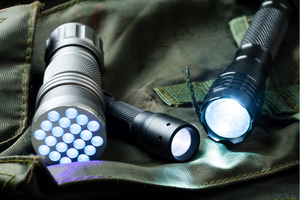 Purchase candles, matches, torches, and batteries and store them in a waterproof covering.
Purchase candles, matches, torches, and batteries and store them in a waterproof covering.
Kerosene lamps are excellent if you have space to store them.
Think long and hard about emergency light, energy, and hot water needs.
Related: 7 DIY Projects To Have Ready When The Lights Go Out
Calculate the minimum necessary for your household. No freezers or fridges are included here; this is just emergency power.
If you can, fit a small solar system for emergencies. For heating hot water, you may need larger solar panels with 24-volt output.
Heat
Human bodies huddled together are warmer, so pile up the blankets and accept that storytelling or candlelit card games will have to take over from TV or cell phones.
If you are just one person, use layers of clothing. Thermal underwear traps air between wool sweaters and warms you up. Wearing thick socks and gloves really helps.
We learned quickly to always clean out our wood-burning stove first thing in the morning, put ashes in a container to use on the veg plot, and then set the fire in daylight for later.
Related: How to Make Firebricks (fire logs) and Wood Stove Logs for Free!
We used vine cuttings, dried and cut to size for kindling wrapped around any spare paper or packaging. We brought the weekly newspaper, junk mail, and cereal packets to set off the fire initially. The fire gives heat and a certain amount of light.
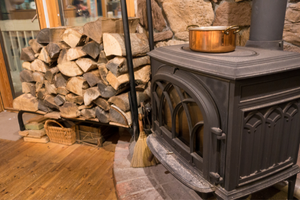 Sleeping in the same room as the fire is cozy, but not without dangers.
Sleeping in the same room as the fire is cozy, but not without dangers.
As long as the last log is just smoldering, it is pretty safe.
Make sure you have a battery-powered carbon monoxide monitor nearby because wood fumes can be toxic.
In any case, the heat rises so if you are going to sleep upstairs, sleep in the room right above the fire.
In our case, it is a one-room cabin with pull-down beds, so we ate, cooked, had a fire, and slept all in the same place. In an emergency, get all your family into one room to conserve heat and keep an eye on them.
How To Prepare
Install a wood-burning stove, or purchase a gas-fired heater for short-term use. Stockpile dried wood to burn. It needs 2 years minimum before you can burn it in a stove.
Kindling can be collected from any country area, like twigs, fallen branches, etc. Keep drying wood under cover and if you prune trees, save this wood. Give teenagers pocket money to regularly chop the wood.
Water
If you are lucky, your water supply is unaffected. Just in case, fill the bath or containers with cold water as soon as the power goes off. At least you will have a supply of clean water for a few days.
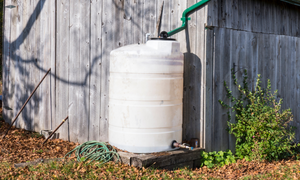 In our case, rainwater is saved in a storage tank outside the back door so we can just go and get a jug or a cupful whenever it’s needed.
In our case, rainwater is saved in a storage tank outside the back door so we can just go and get a jug or a cupful whenever it’s needed.
Boiled water is safer because it kills germs so we make tea and then fill up water bottles when it’s cool.
However, if you are not sure about your water supply, some water-purifying tablets are essential.
How To Prepare
Installing a rain collector is possible in many states so you can install one before it happens. Fill the bath with clean water as soon as the power goes. Store at least a gallon of water per person per day if you can.
⇒ The Ingenious Portable Water Generator Which Extracts Water From Thin Air
You can buy individual bottles but another option is to fill several plastic 20-gallon containers from a tap. Store them in a shaded position out of direct sunshine.
If you live off-grid, your water supplies may use electric pumping systems so do your research and be prepared before it happens.
Food Supplies And Cooking
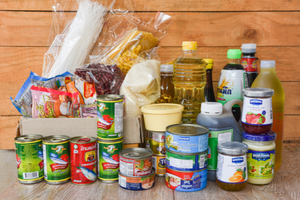
Make sure your cupboard is always packed with non-perishables.
In our cabin, there is always a massive pot of peanut butter, a week’s supply of pasta and rice, cans of soup, tomatoes, and fish, as well as dried lentils, fruit, nuts, and energy bar snacks in an airtight, mouse-proof container.
A packet of decent coffee is a must in our house, as well as teabags and herbal teas. We grow mint, herbs, vines, blackberries, apples, and rosehips at the cabin so we can always pick these from spring through to the fall as food and for herbal teas.
If you have chickens, then you have eggs so omelets, and pancakes are on the menu too. Is there a farm close to your home? Build a relationship with them before the blackout by buying their products regularly. Farmers will sell to locals rather than strangers in an emergency.
We use a gas stove in the cabin and I recommend this but even a small camping stove can heat soup, pasta, and boil water for tea.
How To Prepare
Plan for food storage system in your home without electricity; maybe a cupboard out of direct sunlight, under the stairs. It needs to be mouse proof too. Buy a can every week and watch that pile grow. Add pasta, rice, canned fish, ham, dried fruit, and nuts.
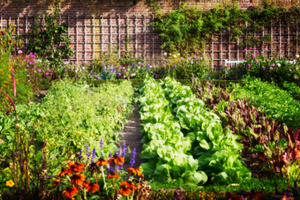 If possible, wherever you live, learn to grow herbs, fruit, and vegetables for emergencies.
If possible, wherever you live, learn to grow herbs, fruit, and vegetables for emergencies.
It depends on your USDA zone, but you can grow greens in a greenhouse all winter and store vegetables in a root cellar (beetroots, carrots, potatoes) if you have the space.
Related: How To Grow A Food Garden Completely Hidden In Plain Sight
Hardy herbs are useful; sage, thyme, and rosemary can be picked fresh all year round. Cabbages will survive winter outdoors too.
Forage for food and learn how to do this before the crisis happens. Just knowing which local weeds can be cooked or eaten raw will give you a purpose, some exercise, and great satisfaction for a tastier meal.
Nature’s Needs
Everybody needs the toilet now and then and if it’s outside, children are going to get scared. So are the adults but if you are in charge, have a battery for that torch or hope for a full moon.
Our cabin has a toilet in a wooden shed with a camping toilet placed inside, which we empty every 3-4 days into a specially dug pit at the edge of the property. A composting toilet is even better.
How To Prepare
If you have a facility like ours, just make sure there are a few extra rolls of paper there too. Toilets in urban areas are rarely affected by a lack of electricity because water does not depend on it.
Your water supply may use an electric pumping system, so a hand pump may be necessary. Another option is to use alternative power supplies, like solar and wind.
The important thing to do here is to check how your system works, and figure out how you will cope if the power switches off.
First Aid
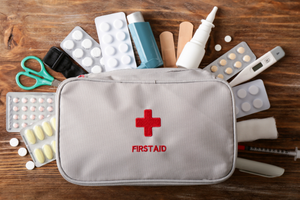 Hospitals will be a drive away, you may not have gasoline and there is no electricity so having basic supplies is essential.
Hospitals will be a drive away, you may not have gasoline and there is no electricity so having basic supplies is essential.
At least, you need plasters of varying sizes, antiseptic cream, scissors, diarrhea medicine, and some good elastic bandages for sprains, etc.
If anybody needs regular medication, include that and add sanitary items for women. On our bookshelf in the cabin, there is a guide on how to manage most health situations.
How To Prepare
If anybody in your household is a doctor or nurse that is wonderful but make sure that at least one person in your household has first aid training, can do CPR, make a splint for broken bones, and knows the basics.
Other Tips When The Power Is gone
Your freezer will defrost rapidly so food will spoil once the electricity has been off for 24 hours. In the meantime, plan what you want to take out and do it all in one go, and close the lid quickly. This will conserve cold for longer.
If water is scarce, scrape some ice into a bowl and defrost this. For fuel, have supplies ready: wood, kerosene, and a spare bottle of gas for refilling lamps.
A solar-powered or hand-cranked radio can be a lifesaver if you want to hear another human voice or for local news. Light comes from a natural source. Use it whenever the sun is up.
When you cannot withdraw money because of no electricity, cash becomes a luxury item. Always have some spare to buy essentials when cards no longer work.
Keep it all in one place. Our emergency bag lives on a hook close to our back door. It contains torches, batteries, a phone cable, one solar wind-up torch just in case, and some candles and matches.
Going without electricity changes your perspective on life completely. In our cabin, as soon as night falls, there are no street lamps, no shop lights, the world looks very ancient, and architectural forms can be clearly seen like the mountain 3 miles away or the sound of the waves from the shoreline 3 miles the other way.
The only light available is from the moon or candles. One piece of advice is to get up with the sun and go to sleep early when the sun goes down. Treat is as time to enjoy your loved ones and plan for this emergency well.
You may also like:
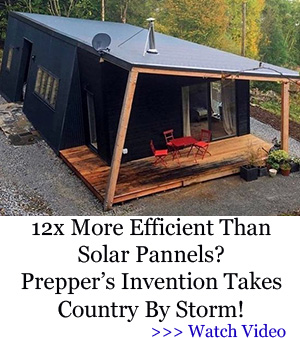 Amish Long-Lasting Recipes Every Prepper Should Learn
Amish Long-Lasting Recipes Every Prepper Should Learn
70+ Projects To Survive A World Without Electricity (Video)
The Disaster Myth Narrative: No One Panics, No One Loots, No One Goes Hungry
Ingenious Traps You Can Set Up On Your Property To Catch Looters
The Map That Shows You The Edible Trees In Your Neighborhood

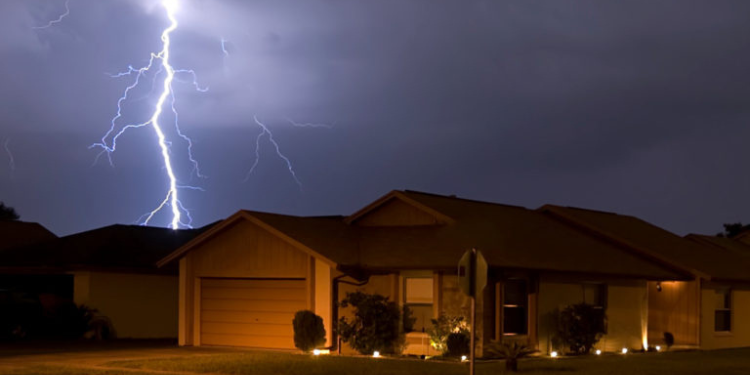













A real “I did it article”. Well written. Obviously given their water didn’t freeze that it wasn’t in a deep New England Winter but still very good article.
Was impressed that connecting with local farmers and such was mentioned. She’s right that folks trade with folks they KNOW and TRUST.
Build that relationship before ethe lights go out, friends.
Ecclesiastes 4:12
“Though one may be overpowered, two can defend themselves. A cord of three strands is not quickly broken.”
Explanation and Commentary of Ecclesiastes 4:12
This particular verse seems to be about mostly exactly what it is says at face value. The author had said that all was vanity for a man who is alone and toils for nothing, with no one else in his life. Then he extols the virtues of having a partner. This verse describes one of them. Practically, to be alone in life is always a more precarious proposition than having friends. People who travel alone are much more vulnerable.
We lost power for a 6 1/2 days during a snow storm, and except for a little boredom we made it work. Ran a genny 4 hours in the morning 4 in the evening to to keep indoor fridge/freezer cold, charged phones, powered wifi so GF could still do a little work online and cook 2 hot meals a day. Our water is spring fed so no issue there, and heated water on propane stove to bathe with and i think everyone only bathed once in those 6 1/2 days. Our highest chances of power loss is in the winter so we prepare and have generators fueled. tested and ready just for that purpose. Also have solar panels available to charge batteries for my CPAP and LED lights we can run throughout the house if need be. I actually enjoyed those 6 1/2 days, the household really came together to accomplish tasks and support each other.
In the past I lived (on purpose!) without electricity for over a year several different times. Your article addresses a lot of what we went through. When freezers fail in the winter, it’s not too bad because you can take advantage of the cold temps, but in the summer, rushing to can or eat as much as possible before it goes bad is a must! Be sure to have plenty of jars and lids available at all times and have an energy source for your canning!
I live in the Virgin Islands. I have been through many hurricanes here since moving here in 1995. After hurricane Maryland I went almost 8 months before power was restored to our residence. Hurricane Irma was 7 months on the East End of the Islands. The constant sound of portable generators and construction is enough to drive you crazy at times. A week without electricity is a joke. Your in the woods and it’s cold and you don’t have a wood burning stove or a pile of wood then your not a preper. I have enough food on hand at anytime for 6 months for two people eating well. Gasoline and generators. Any person not ready for long periods without power is a damned fool
Boy could I ever pick this apart, item by item! OK, just a couple of things then: Husband and I lived through an ice storm in a house trailer our second winter here. Grid power was out for two full weeks, and the roads were impassable. Yes, we used kerosene lamps and a kerosene heater. We had baby goats born; we had to bring them into the trailer, so put them in a big dog crate in the kitchen. That saved us all. Could we have done better? Yes: We could have moved into the old house on our premises and burned wood. Lesson learned here: Have plenty such fuel available, and be sure and stock up on batteries for flashlights.
Second, we lived through the derecho of 2012. After the storm, the weather turned hot — VERY hot — for the following two weeks. Our own power was out for nine days; others had to wait up to five weeks to have their power restored! We had a generator by that time. We burned it out by running it constantly for three days in a row. So we took our cots down by the creek and made a camp. We went to a local spring and fetched water back in gallon and five-gallon jugs.
So yes, I can pick some of those things apart. Others are right on. Good job!
Good points in this well written article.
Over the year’s I’ve lived without indoor plumbing and electric a few times in a few places.
Like my cabin for 9 months. But, I got to hightail it outta there when the temps started hitting -20° to -40° (actual temps, not wind-chill)
I could have stayed, because I had a wood burning stove and rigged up a composting toilet, so I wouldn’t have to go out just for the bathroom at 3am, lol
But, becoming stir crazy wasn’t on my agenda, so I chose to go where it was warmer and had actual people there, lol
Other time’s I’ve lived without power due to storm’s. That place there, was where the whole township was helping one another. of course, just about everyone knew one another.
I had an outhouse there as well. Where I live now too has an outhouse and there’s a shower stall where I use a solar shower bag in the summer.
The good news is, my little house is only 600sqft, so with a backup heater it’ll be doable just heating one area. I can always bleed the pipes so they don’t freeze. While emptying them, Id be filling more of my 5 gallon water containers, I have 5 filled, with 3 more waiting.
I’ve lived in big, beautiful, comfortable house’s but, the truth is, I’ve never liked that dependency feeling or the cost of living in a lot of wasted space.
The reason for my story is, outhouses come in very handy if it’s possible where you live or have a cabin, woodburing stoves or some kind of back up heaters, water is a must and well, I’ve stocked food for a long, long time. Rotate it though, keep the dates fresh. Yes, and get aquatinted with neighbors. We do welfare checks on one another and some of us help each other on project’s.
8 years with no power, no water on site, no phone. This was before cell phones & satellite tv was in its infancy.
Propane kitchen range, refrigerator & light. Grandma’s kerosene lantern & candles, both hard to read by. Wood stove for heat and a water bed….yes, weird. Lots of old style sleeping bags under the sheets. Single room cabin. Outhouse w/ honey bucket & lid for night time use. And we packed water constantly.
After a few years we saved enough for a Honda generator with an allocation of 5 gallons gas per week.
Built a sauna for sweat baths and warm room sluicing baths. Grandmas galvanized tub was heaven when we had enough water.
All the above was luxury compared to trapping life in a double wall pup tent w/stove, 9×9 visqueen tent w/ wood stove for cooking, bathing & gear drying & repair. The walk to the outhouse at -65f was down right wicked.
Been there, done that. Do not want to do it again but darn sure could.
Cheers
No water, but you had a waterbed and hot tub? How does that work?
All great Information . , All tips help , , The feed back on this site are life savers, No mater where your from.. Keep them coming,.
I live in swamp area of East Texas. I have asked Creek Stewart, Dave Canterbury and written countless others. The nature centers can’t help and the Arboretum in Houston shrugged. We have different plants here than anywhere else. Argue if you want or bring yourself down here and wonder about the color of that flower or berry. Wrong? You are sick for a while or they just outright kill you. I cannot find a color guide for southwestern Louisiana or East Texas coastal areas. Does anyone have an idea who to ask? The Junior College couldn’t help. I’ve asked rice farmers. They don’t know, they clear it all for rice.
Does the plant foraging book advertised here show specific Coastal East Texas? There are two dandelion looking plants. One is solid stem, the others is hollow and is the dandelion. The other is invasive brought in decades ago with the awful Chinaberry tree.
Any suggestion is greatly appreciated. We have twin plants. A little different but one is good the other is not. I know those. It’s the other flowering plants or berries that have many of us wondering. Any suggestions would be appreciated.
Check with your county extension agent. I don’t have access to my little booklet, but I got a pamphlet about weeds and pesticides. The booklet had about 100 different weeds, grasses, and plants. It listed plants that were more germane to East Texas, so it came in real handy for identification. Not much info on edibility, but it did identify toxic plants. Also, the agent is generally available for onsite visits to help with identification,
Dandelion was brought on the Mayflower for a cash crop I just read earlier this month.
1 year of seasoning for firewood will suffice.
We’ve found 6-month wood works fine. It does require keeping up with soot a little more (i.e. burning commercially available creosote logs or cleaning the stack more often).
Additionally we use a lot of “dead” wood laying around. Depending on the tree type, some of these put out a ton of BTU’s and burn mostly without causing any soot. Even so, in desperate times, I would try burning just about anything I could get my hands on.
I agree with everything you shared. One of the things that I have practiced a few weekends. Is taping all the light switches and handles on the water faucets and gone without electricity and water over weekend to see if I have enough prepper supplies to be comfortable and be able to function within an apartment. Having recently moved into senior housing in town creates an even greater challenge, because we are not allowed to store propane tanks / canisters. And our patio that I used to do a cold frame and a raised bed because of being 77 and it’s hard to bend over, to grow solid vegetables is not available again. And I’m on the shade side of the building LOL. But some of the things you can grow in a Cold frame even during the winter are cutting off the bottoms of your green onions slash bok choy/leaf lettuce/celery and of course herbs. A girlfriend of mine just stuck celery and water I was amazed at how many leaves by just putting it in the windowsill produced. You wouldn’t be able to overuse it but herbs in a windowsill are also a possibility even in a shaded area. While I have electricity I am going to give micro greens a chance in Rubbermaid tabs kissing a kracky method. Using a black plastic garbage can / drilling holes in the side / cutting pool noodles on a slant to install is the holes and making a self-watering tower garden is another really awesome way of growing many plants food and flour that are edible in a very limited space with its cost effective for under $50. Check out the number of YouTube videos it show different designs. And a crazy thing we’re not allowed to use anything plastic outside of our patios. Everything has to be ” artistic”. Sprouting lentils/beans / seeds/seats even turn a dried seed or Bean into a life vegetable that releases protein / vitamins and minerals and it’s the most energy of that seed because it’s getting ready to push through the soil to the Sun. Also canning beans and even rice in pie jars really makes it nice in an emergency which is what I’m in the process of doing. Just a few little ideas that have helped give me a purpose to help others and tight spots that are not preparing. Thanks again for all your hard work that comes from experience. Oh yes and when my 80-year-old husband and myself 77 having trouble because we only had one bathroom and we both had to go now. I hung up a beautiful tablecloth from the ceiling to hide a wooden stand that he had cut a hole so I could put it 5 gallon bucket under it line it with a heavy duty plastic bag that many of the grocery stores now give for grocery bag / used bag of peat moss next to it and hola I had a compost bucket and I could do my business about three or four times. Tie it up and toss it into the dumpster along with everybody else with their doggy calling card bags LOL. And I also carry one of those buckets with toilet paper plastic bags and line it with split good old pool noodles or pipe insulation and even having a 1 gallon pittle bucket that’s easy to dump. It is sure saved my buns LOL many times when traveling and or when I would be and I had to both go to the bathroom at the same time in the house. I think that’s all the tips I’ve got to share at this time that I’ve experienced or practiced. Blessings to all of us as the times good tougher but as it’s been said life is tough but so are we and leaning on the strength of the Lord and praying for his creative ideas helps a lot as well thank you for allowing me to share tata for now Grandma SONnshine Cherry
A full freezer won’t defrost quickly at all if the door isn’t opened. If possible run the freezer for a couple of hours a few times a day… and don’t open it. Freeze a cup of water and place a coin on top and put it back in the freezer. Then you’ll be able to tell if it has defrosted.
In urban areas one third of the electricity used is for pumping water. Extended outage will of course mean no water gets into the community tanks for distribution.
“If water is scarce scrape some ice into a bowl and defrost this”. Well, when the power went out last year during a snowstorm for a week, I tried to ‘flush’ the toilet using snow. I had water for drinking but not for flushing. Trouble is, when the bathroom is only 35*, snow won’t melt!
And I’m not about to cool of the living area by having a bowl of ice or snow in it, either.
Otherwise a good post.
Every power outage I learn something I have forgotten to prepare for. I’m getting better at it all the time. Power outages happen pretty much every winter here. I’m semi-rural small town of 1500, 12 miles away from large city in Willamette Valley Oregon.
I now have 4 Mr Heater Little Buddies. Only had one last year during the storm, and made it through. Have been buying the 1# propane all summer long. Problem is, now the local stores only stock propane from China instead of the Coleman brand. I will NOT buy Chinese propane!
Learned it takes 6-7 1# tanks for 24 hours. I only use the low setting.
I contacted the Mr Heater Buddy manufacturer to find out why you can’t use larger propane tanks inside. They said that propane tanks larger than 1# will off gas if it gets too hot, and only the 1# do not off gas if it gets too hot. You do NOT want offgassing propane inside your house!
So don’t try to cheat like I was thinking about doing!
Anyway, keep preparing for the worst, and be safe. Thanks to all who comment on these blog posts. I learn so much form everyone including the writer.
Great article. Something people need to get their head around is how things slow down without tv, cell phones, video games, etc. your work is Alton to be prepared for the next couple of days or nights. You prepare food for the day or maybe next day… But it doesn’t keep so you don’t make too much. You learn how to forge and gather… And think… The “planning” is most important. The plan always changes. Keep your head together and be patient… Things will get better. They always do.
My first house (6 yrs old at the time) was a massive timber frame built in the 1870’s… We moved into the house in the late 50’s about two weeks before Christmas. The temperature outside varied, sometimes as low as -20 F.
It came equipped with a wood stove in the kitchen and a single cold-water tap. Heat in the “living room” was an oil-fired space heater, together with one in the other side of the first floor. There was no heat on the second floor.
Bathroom accommodations were a “commode” (5 gallon bucket with a toilet seat, and bathes were taken in a 30-gallon washtub in the kitchen. A “commode was vented it the chimney to minimize odor, and reserved for Mom and Sis. Dad put a curtain up around it so that the ladies had at least the illusion of privacy. Dad and I used the two holer in the woodshed. A kerosine lantern was available for night-time trips and provided heat in the latrine. I can say without a doubt that it gives the old saw “Happiness is a warm toilet seat” a whole new meaning.
Power consisted of a single light fixture in the ceiling and two outlets in the walls. Wiring was knob and pole in most of the layout and old two wire cable in some parts… Three of the four switches were the knob type and still worked most of the time, the other part of the time.
Things changed the FIRST thing in the spring starting with the thaw. Gound was moved, septic system installed, new wiring, bathroom built, a shower installed on a concrete pad in the cellar (didn’t even have to walk across the dirt to get to it!) WOW…
This sort of experience puts a whole different outlook on what is truly important in life.
Good Article for “general” preparedness wherein power will be out for short duration’s.
But one really needs to consider longer term duration’s without food, water, electricity, or fuel.
EMP’s, Solar Flares, the Earth’s magnetic anomalies, Terrorist actions (Foreign and Domestic) can take down grid systems permanently.
All forms of communications can be taken down in a flash. You will not be able to reach loved ones far away for a very, very long time (if ever). There likely will not be any radio or TV either.
Home security will be an extreme threat in the major cities.
Cars, motorcycle will not likely run. If they do, you will become a target of terror as others attempt to take it away from you. The same for food and water supplies.
In heat zones during the summer, tempers will flair as there will be no way to remain cool.
In winter zones, if there are not a lot of trees, people will freeze.
Gas, Diesel, Propane will not be available. Pumps will be shut down.
Water towers will be without water in a matter of hours or certainly less than a few days.
People will be without cash or jobs. If you can’t get paid or there are no ATM’s working, money will have no value. People will be desperate as they did NOT educate themselves for such events or prep for them. THIS INCLUDES UTILITY WORKERS! If their company and personal vehicles won’t run or they can’t get fuel, or they get paid with worthless checks, cash or other, why would they come to work? Same for medical professionals, police, fire, banking, etc. YOU’RE ON YOUR OWN!
If the event is an EMP, earth magnetic anomaly or solar flair, very few will be prepped for that as electronics are fried. How many generators, refrigerators, radios, tv’s, automobiles have electronic components? How many know what a Faraday cage is? Much less, how many people have one (whether it be large or small) with spare parts? Plants won’t be able to make electronic (or other) parts any time soon. And if they do, you can bet that the military will have priority for years.
Short-term electrical outages are one thing. Long-term (or permanent) requires a whole different way of thinking.
If you live in the wilderness, you’ll already have basic principals of survival established. Just continue to educate yourself on the alternatives. You might not ever need them, but you can’t say you won’t. Just look at the more recent events that have happened in North Carolina and Oregon. Domestic terrorists took those systems down without anyone knowing who did it. Parts were not readily available. Large numbers of people were without for some time. Don’t think it won’t happen to you. Winter storms can cause downed trees. In the south, summer weather brings tornado’s and hurricanes. Living in the wilderness brings its own perils with forest fires (lightning strikes).
If you need water and live in the north, melt snow. You can bath, use the toilet on a septic system or clean most things without effort by melting enough snow. Same in the south by using creeks, streams, or lakes. (The north can use these same resources in the summer). No need for an outhouse. Stay inside where its warm and safe in most instances.
Build solar heat panels for warmth. Use solar if you have an array and spare electronics available (i.e. inverters, etc. – otherwise, they are of little use). Build outdoor tanks painted black for warm or hot water. Place them in direct sun areas.
It’s just hard to conceive that ANY area is without risk. Best to study up and be prepared…Just in case…